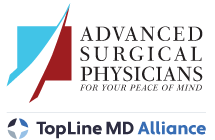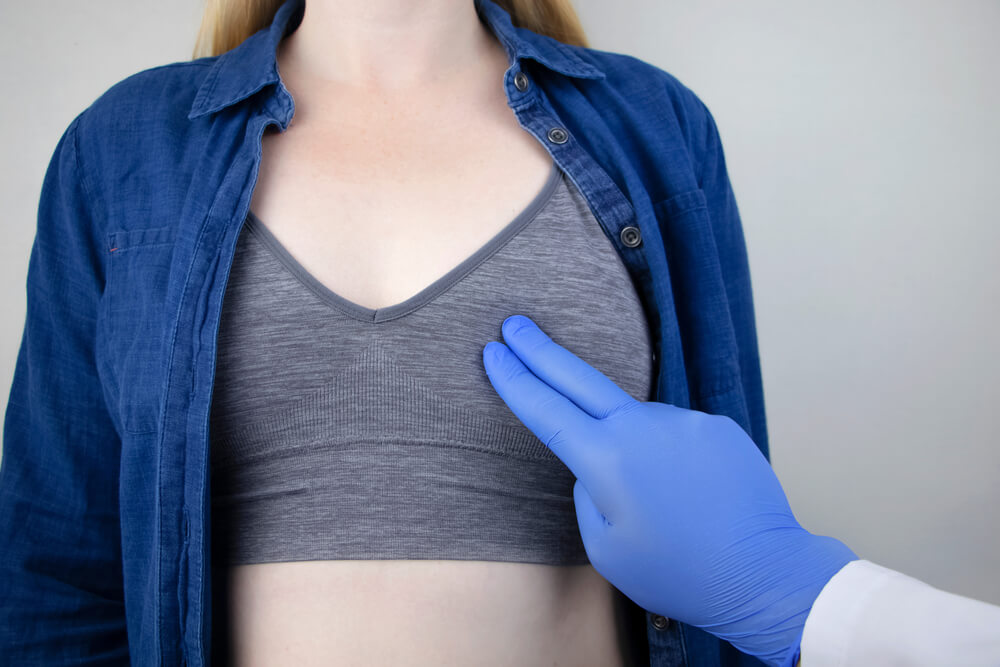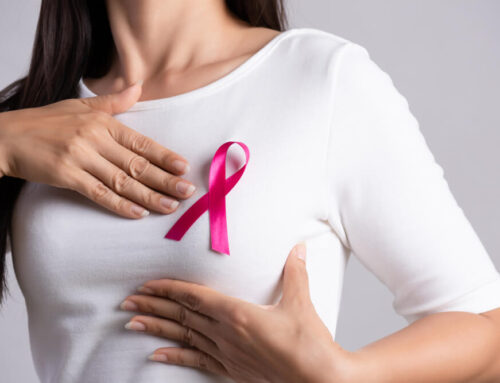Breast health is a topic of paramount importance for women of all ages. Breast cysts and breast tumors are two common breast-related issues that can raise concerns. But how do you differentiate between them, and when should you worry? In this comprehensive guide, we at Advanced Surgical Physicians will explore the differences between breast cysts and tumors, delve into the symptoms of breast cysts, and discuss how ultrasounds can aid in distinguishing between breast cancer and cysts.
Breast Cyst vs. Tumor: What’s the Difference?
To truly understand breast cysts and tumors, we first need to distinguish between the two.
Breast Cysts
Breast cysts are fluid-filled sacs that can develop within the breast tissue. These cysts can vary in size and are often benign, meaning they are not cancerous. They may come and go and are usually harmless. However, they can sometimes cause discomfort or pain.
Breast Tumors
Breast tumors, on the other hand, are abnormal growths of cells within the breast tissue. They can be benign (non-cancerous) or malignant (cancerous). Malignant tumors are commonly associated with breast cancer. While benign tumors are generally harmless, malignant ones require immediate attention and treatment.
Symptoms of Breast Cysts
Understanding the symptoms of breast cysts is crucial for early detection and peace of mind. Common symptoms include:
- Breast Lumps: The most noticeable symptom of a breast cyst is often the presence of a palpable lump in the breast. These lumps are typically smooth and round, and they may change in size throughout the menstrual cycle.
- Pain and Discomfort: Breast cysts can cause pain or discomfort, especially when they increase in size. The pain is usually localized to the area around the cyst.
- Tenderness: The affected breast may feel tender or sore, especially during physical activities or pressure on the chest.
- Changes in Size: Breast cysts can fluctuate in size, often becoming more prominent just before menstruation and shrinking afterward.
- Breast Skin Changes: In some cases, the skin overlying the cyst may appear reddened or feel warm.
It’s important to note that breast cysts can be asymptomatic and may only be discovered during routine breast examinations or mammograms.
Ultrasound of Breast Cancer vs. Cyst
Ultrasound imaging is a valuable tool for differentiating between breast cancer and cysts. Here’s how it works:
Breast Cysts on Ultrasound
- On ultrasound, breast cysts typically appear as well-defined, round or oval-shaped, fluid-filled structures.
- They are often characterized by a dark or black center, which indicates the fluid content.
- The edges of a breast cyst are typically smooth and distinct.
Breast Cancer on Ultrasound
- Breast cancer may appear as irregularly shaped masses with spiky or uneven edges on ultrasound.
- Unlike cysts, solid masses don’t contain fluid and thus appear as grey or white areas.
- Suspicious features, such as microcalcifications or increased blood flow, may also be visible in cancerous lesions.
If an ultrasound reveals a suspicious mass, further diagnostic tests, such as mammograms, biopsies, or MRI scans, may be necessary to confirm the nature of the lesion.

Difference Between Breast Cancer and Cyst
One of the most critical distinctions to make is between breast cancer and cysts. Here are some key differences:
- Nature of the Growth:
- Cysts are fluid-filled sacs and are typically benign.
- Breast cancer involves the uncontrolled growth of abnormal cells within the breast tissue and can be benign or malignant.
- Texture on Imaging:
- On imaging, cysts appear as fluid-filled structures with smooth edges.
- Breast cancer masses often have irregular shapes and may appear as solid lesions on imaging.
- Risk and Treatment:
- Breast cysts are usually harmless and do not increase the risk of breast cancer.
- Breast cancer, if malignant, requires prompt treatment and can be life-threatening.
When to Worry and Seek Medical Advice
While breast cysts are often benign and not a cause for significant concern, it’s essential to be proactive about your breast health. Here are some guidelines on when to seek medical advice:
- New or Unusual Symptoms: If you discover a new lump in your breast or experience unusual symptoms, such as persistent pain, tenderness, or skin changes, consult a healthcare professional.
- Family History: If you have a family history of breast cancer, it’s essential to be vigilant about regular breast examinations and screenings.
- Changes in Existing Cysts: If you have known breast cysts and notice changes in their size, shape, or texture, seek medical evaluation.
- Regular Breast Exams: For women over 40, regular mammograms are recommended as part of breast cancer screening.
- Prompt Attention to Abnormal Findings: If imaging, such as ultrasound or mammography, indicates a suspicious mass or lesion, follow up with your healthcare provider promptly for further evaluation.
Breast Cyst Management
If you’ve been diagnosed with a breast cyst, it’s important to discuss management options with your healthcare provider. Don’t hesitate to speak about anything that might worry you with our Dr. Eldredge. In many cases, simple cysts that are asymptomatic may not require any treatment. However, if the cyst is causing discomfort or if there is uncertainty about its nature, your healthcare provider may recommend:
- Aspiration: For symptomatic cysts, aspiration is a common procedure where a fine needle is used to remove the fluid from the cyst. This can provide immediate relief from pain and discomfort and may also serve as a diagnostic tool to confirm that the lump is indeed a cyst.
- Monitoring: In cases where the cyst is small, asymptomatic, and appears benign on imaging, your healthcare provider may suggest monitoring it over time with regular follow-up appointments and imaging to ensure it doesn’t change or grow.
- Biopsy: If there are any concerns about the nature of the breast lump, your healthcare provider may recommend a biopsy to obtain a tissue sample for further evaluation. This is particularly important when dealing with complex cysts or masses with suspicious characteristics.

Risk Factors for Breast Cancer
While most breast cysts are benign, it’s crucial to be aware of risk factors associated with breast cancer, as early detection can greatly improve outcomes. Some risk factors include:
- Gender and Age: Women are at a higher risk of breast cancer, and the risk increases with age, especially after 50.
- Family History: A family history of breast cancer, especially in close relatives like a mother, sister, or daughter, can increase your risk.
- Genetic Mutations: Certain genetic mutations, such as BRCA1 and BRCA2, are associated with a higher risk of breast cancer.
- Hormonal Factors: Hormone replacement therapy, early menstruation, late menopause, and never having given birth can influence breast cancer risk.
- Lifestyle Factors: Unhealthy lifestyle choices such as excessive alcohol consumption, smoking, and a sedentary lifestyle can also increase the risk.
Breast Health and Self-Examinations
To maintain breast health and early detection, regular breast self-examinations are recommended for women of all ages. Performing a self-exam allows you to become familiar with the normal look and feel of your breasts. If you notice any changes during your self-examination, such as a new lump, nipple discharge, or skin changes, it’s essential to seek medical attention promptly.
Conclusion
Understanding the difference between breast cysts and tumors, recognizing the symptoms of breast cysts, and utilizing diagnostic tools like ultrasound can help women make informed decisions about their breast health. Don’t hesitate to reach out to us for a professional diagnosis of breast diseases in Wellington, FL, if you have any concerns. Regular breast self-examinations, clinical breast exams, and mammograms, as recommended by healthcare professionals, are essential steps in early detection and promoting overall breast health.
This blog is for informational purposes only. If symptoms do not resolve or if they return, seek medical attention as soon as possible at your primary care physician or with our office.







